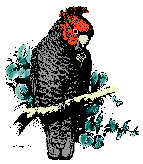 |
canberrabirds
|
 |
canberrabirds
|
| To: | "<>" <> |
|---|---|
| Subject: | Re: FW: [canberrabirds] Scarlet Robin |
| From: | David Rees <> |
| Date: | Mon, 11 Apr 2016 22:45:57 +0000 |
|
Ah the 'precautionary principle' - what you do in the absence of data. Coming from a 'biosecurity' background, I am very aware that use of the 'precautionary principle' is banned for the management of invasive exotic species at and before the
border by international treaty (WTO SPS agreement - to which Australia is a signatory). Australia does not use the the 'precautionary principle' for regulation of medicines or pesticides either.
I live on a small bit of land a Gungahlin suburb which as a sheep paddock 10 years ago. The density of native birds - including breeding ones - on my plot with my house on it is probably higher now than it was 10 years ago 'cos there is cover which I
have provided, where before there was none. Its the least I can do. There are all those drainage systems with their crakes etc. where before there was an eroded creek line with no water in it most of the time and no shade. Is building a city, with the benefits
it has given us - including work etc., and even birds all bad - no.
Look at Google Earth - see how much space Canberra takes up relative to the area it is placed in - not much. If species are declining on a regional basis then widespread regional impacts are more likely at play. What we do over a few hundred ha in Canberra
will have an effect locally but what effect will it have on a widespread species on a regional basis - little unless something similar is happening everywhere else.
By international standards Canberra has an amazing amount of land under some sort of protection including many good bird watching spots. Management could be better, but much of that is a result of limited resources and not a reflection on the hard work
of ACT Park staff. In places like the UK, local community organisations have themselves had to buy on the open market and then manage such neighbourhood places themselves to order to preserve them.
If the arboretum site had been developed for housing one can only imagine what would have been built there - I'm sure it would not have helped our housing affordability problem!!
David
On Sat, Apr 9, 2016 at 3:16 PM, Con Boekel
<> wrote:
|
| <Prev in Thread] | Current Thread | [Next in Thread> |
|---|---|---|
| ||
| Previous by Date: | migration through Torrens and Grey Shrike-Thrush, Stephen |
|---|---|
| Next by Date: | Yellow tailed Black Cockatoos, Alan Ford |
| Previous by Thread: | FW: FW: [canberrabirds] Scarlet Robin, Geoffrey Dabb |
| Next by Thread: | Plumed Whistling Dux, Martin Butterfield |
| Indexes: | [Date] [Thread] [Top] [All Lists] |
The University of NSW School of Computer and Engineering takes no responsibility for the contents of this archive. It is purely a compilation of material sent by many people to the Canberra Ornithologists Group mailing list. It has not been checked for accuracy nor its content verified in any way. If you wish to get material removed from the archive or have other queries about the list contact David McDonald, list manager, phone (02) 6231 8904 or email . If you can not contact David McDonald e-mail Andrew Taylor at this address: andrewt@cse.unsw.EDU.AU